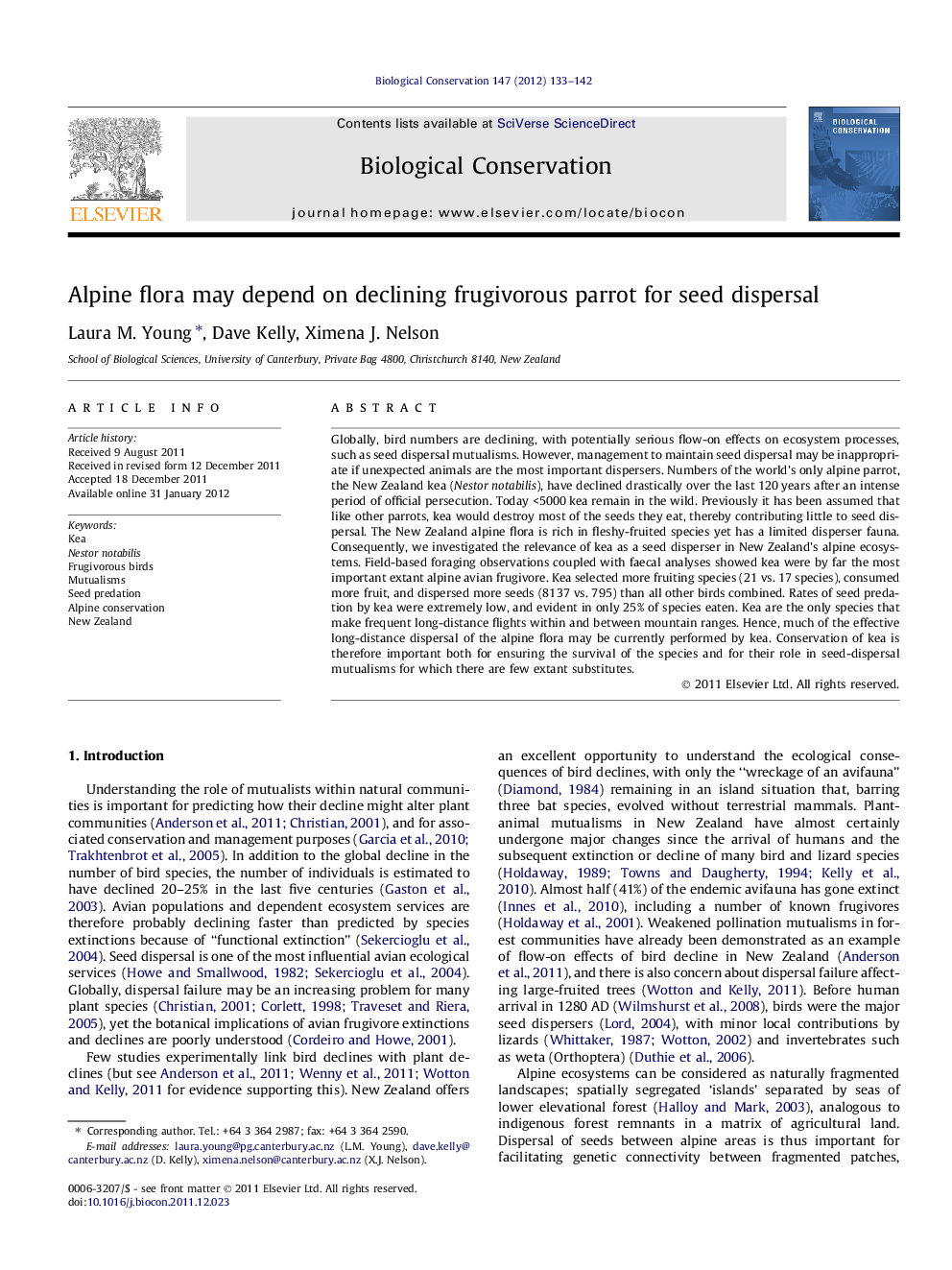| Article ID | Journal | Published Year | Pages | File Type |
|---|---|---|---|---|
| 4385291 | Biological Conservation | 2012 | 10 Pages |
Globally, bird numbers are declining, with potentially serious flow-on effects on ecosystem processes, such as seed dispersal mutualisms. However, management to maintain seed dispersal may be inappropriate if unexpected animals are the most important dispersers. Numbers of the world’s only alpine parrot, the New Zealand kea (Nestor notabilis), have declined drastically over the last 120 years after an intense period of official persecution. Today <5000 kea remain in the wild. Previously it has been assumed that like other parrots, kea would destroy most of the seeds they eat, thereby contributing little to seed dispersal. The New Zealand alpine flora is rich in fleshy-fruited species yet has a limited disperser fauna. Consequently, we investigated the relevance of kea as a seed disperser in New Zealand’s alpine ecosystems. Field-based foraging observations coupled with faecal analyses showed kea were by far the most important extant alpine avian frugivore. Kea selected more fruiting species (21 vs. 17 species), consumed more fruit, and dispersed more seeds (8137 vs. 795) than all other birds combined. Rates of seed predation by kea were extremely low, and evident in only 25% of species eaten. Kea are the only species that make frequent long-distance flights within and between mountain ranges. Hence, much of the effective long-distance dispersal of the alpine flora may be currently performed by kea. Conservation of kea is therefore important both for ensuring the survival of the species and for their role in seed-dispersal mutualisms for which there are few extant substitutes.
► Numbers of kea, the world’s only alpine parrot, have declined drastically after >100 years of intense persecution. ► We investigated the relative importance of kea and other alpine birds for seed dispersal in New Zealand’s alpine flora. ► Kea were the most important disperser, consuming more seeds of more species and excreting most intact. ► Kea conservation is vital to ensure the maintenance of a dependent flora. ► Management may be mis-targeted if assumptions about which species are key dispersers are incorrect.
